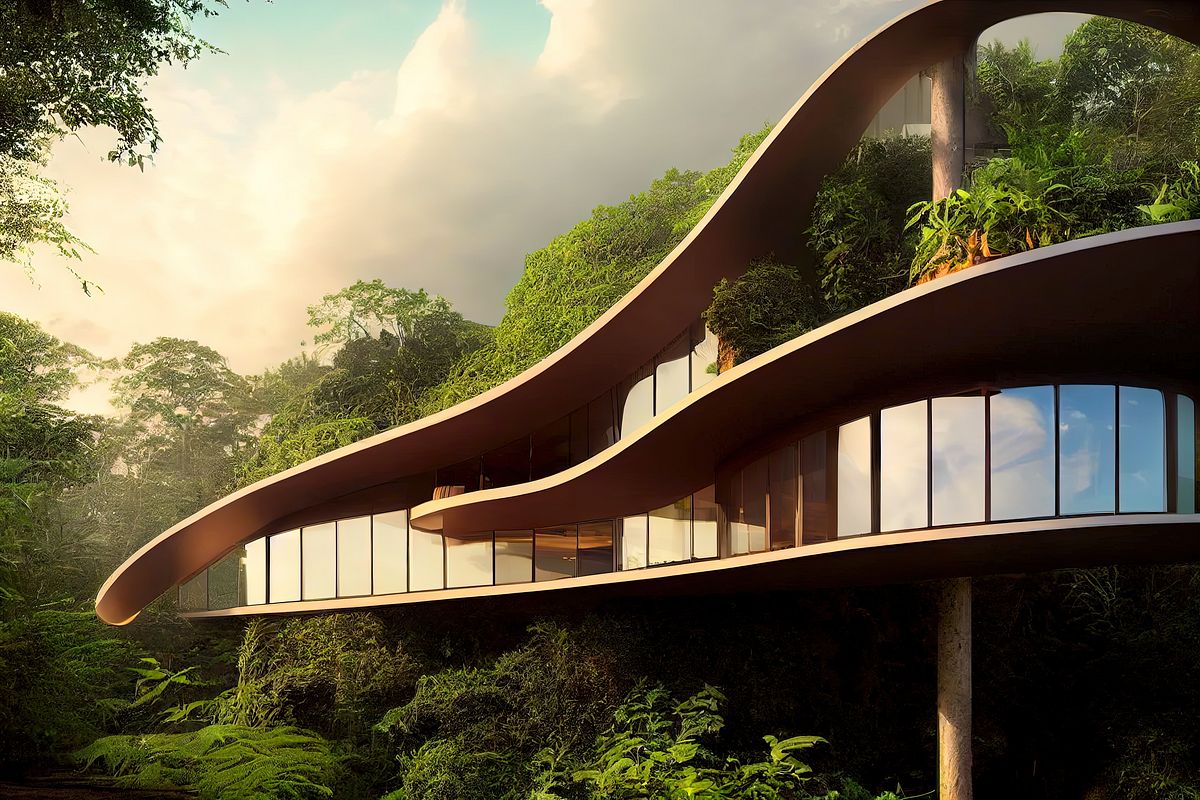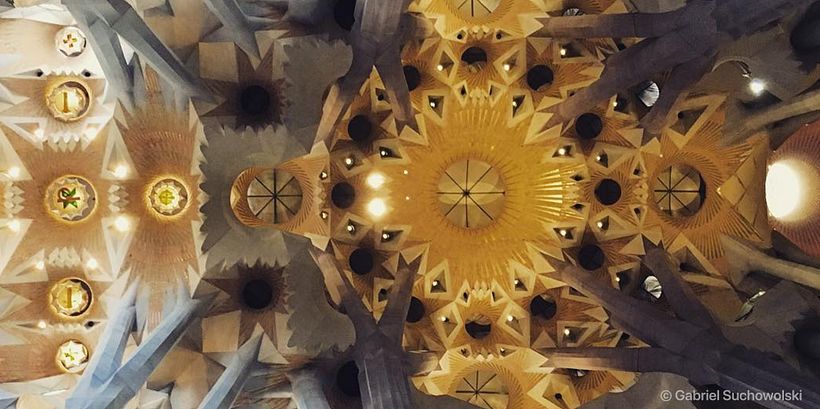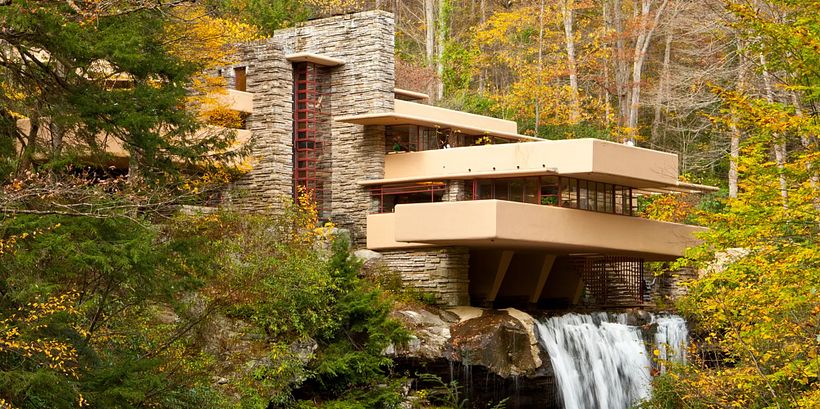What is Organic Architecture? 6 Main Characteristics

Have you ever wondered what organic architecture is? Find out the 6 main characteristics that define it.
In this article, you will learn what organic architecture is, its characteristics and some of the best known architects of this movement. Let's take a look!
Let's start by defining what organic architecture is. It is an architectural trend that seeks to create harmonious and functional spaces in harmony with nature. It is characterized by using natural materials and designing organically, imitating the forms and structures found in nature.
Its main objective is to create an architectural environment that integrates fluidly and respectfully with the natural environment. In this trend, the functionality of the spaces is not the only important thing, so is the impact it has on the environment and the level of energy consumed by the building. Frank Lloyd Wright, Antoni Gaudí and Alvar Aalto are some of the main exponents of organic architecture.

And now let's see the main characteristics of this architectural movement.
1. The materials
Organic architecture is characterized by the use of natural materials to achieve a better integration with the environment. Wood, stone, glass and steel are materials that create spaces that manage to mimic the natural environment.
Wood is one of the most commonly used because of its versatility and natural beauty. It is used in the construction of structures, cladding and furniture, providing warmth and connection with nature. Its ability to regulate humidity and improve indoor air quality is highly valued.
Stone is another material also widely used, either in its natural or processed form. Stone offers strength and durability to architectural projects, as well as adding texture and character to the design. It is also used in the creation of walls and floors, providing a sense of stability.
Glass and steel are industrial elements that combine with natural materials to create interesting contrasts. Glass allows a visual connection with the environment, while providing luminosity and transparency to interior spaces. Steel, on the other hand, offers strength and structure to buildings, allowing the creation of fluid and organic designs.
2. The mass
Mass is a fundamental element in organic architecture: it allows for the creation of solid forms and structures that are integrated with their surroundings. Instead of conceiving buildings as isolated objects, organic architecture seeks to establish a harmonious connection between form and function, where mass plays an important role.
The use of mass is characterized by the search for balance and harmony in the design of spaces. It is sought that the volumes and forms are not only visually attractive, but also functional and respond to the needs of those who will inhabit the space. The union of form and function is manifested in every detail of the construction, from the layout of the interior spaces to the choice of materials and the integration of sustainable energy systems.

3. Glass
Glass plays an essential role in organic architecture, allowing a visual connection with the natural environment and breaking the conventional forms of buildings. Its transparency and lightness create a sense of openness and fluidity in spaces. Can you imagine panoramic views of the landscape?
In organic architecture, it is important that materials move from the interior to the exterior to achieve continuity between the natural environment and the building design. Glass is a key element for this integration. A unique spatial experience with light coming inside and, at the same time, observing the surroundings.
In addition, in organic architecture, glass is sought to have a minimal visual impact, in order to make the landscape the protagonist. This is achieved through the use of transparent and lightweight glass systems, which adapt to the shapes of the building without imposing on them. Glass is ideal for enjoying and feeling nature, creating a unique architectural experience that establishes a harmonious dialogue between the interior and exterior.
3. Originality and adaptability
The search for unique and personalized designs is one of the fundamental principles of this architectural style, using a combination of fluid forms and natural materials.
Each project is unique and personalized, as it allows to offer architectural solutions for all tastes. It is not simply a matter of copying and reproducing existing designs, but of creating spaces that are truly unique and adapted to the needs and styles of each person.
To achieve this, in this type of architecture it is important to take into account the orientation of the sun, the topography of the terrain and even the presence of natural elements such as trees and rocks. These factors are integrated into the architectural design to create a seamless connection between the interior and exterior.

5. Sustainable designs
Sustainable designs seek to minimize environmental impact and make the best use of available natural resources. One of the key features is the use of renewable energy. Harnessing solar energy through panels and the use of geothermal energy systems are examples of how organic buildings can reduce the use of non-renewable energy sources.[/h][/h][/h
Certified wood, bamboo, stone and other materials that come from renewable sources promote forest conservation and reduce the extraction of non-renewable resources.
Another aspect to highlight is the reduction of environmental impact. This is achieved through careful planning of interior and exterior spaces, maximizing energy efficiency, the use of recycled water systems and the creation of green areas that promote biodiversity. Always go for sustainable design!
6. Flexibility
Flexibility allows buildings to adapt to people's needs and preferences, as well as to their natural environment. It seeks to take advantage of and respect the lines and forms that nature presents in the environment. They are designs that mimic the landscape, using soft curves and organic shapes that resemble natural elements, such as the shapes of leaves or the ripples of water. This integration creates a sense of harmony and connection with nature.
This characteristic is also reflected in the ability of the spaces to adapt and respond to the different uses and needs of people. Environments can be transformed and reconfigured, allowing inhabitants to personalize their experience and optimize the space for their particular use.

If you are passionate about architecture, you might also be interested in discovering:
- This organic architecture course with generative art.
- The best courses on architecture and spaces of Domestika.
- Architecture and design magazines





0 comments